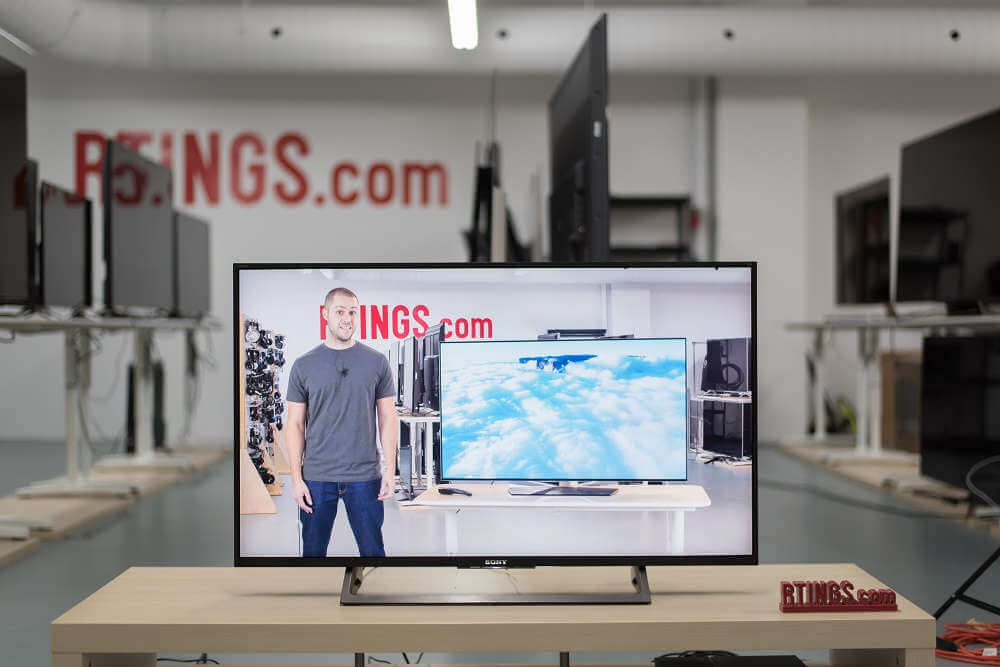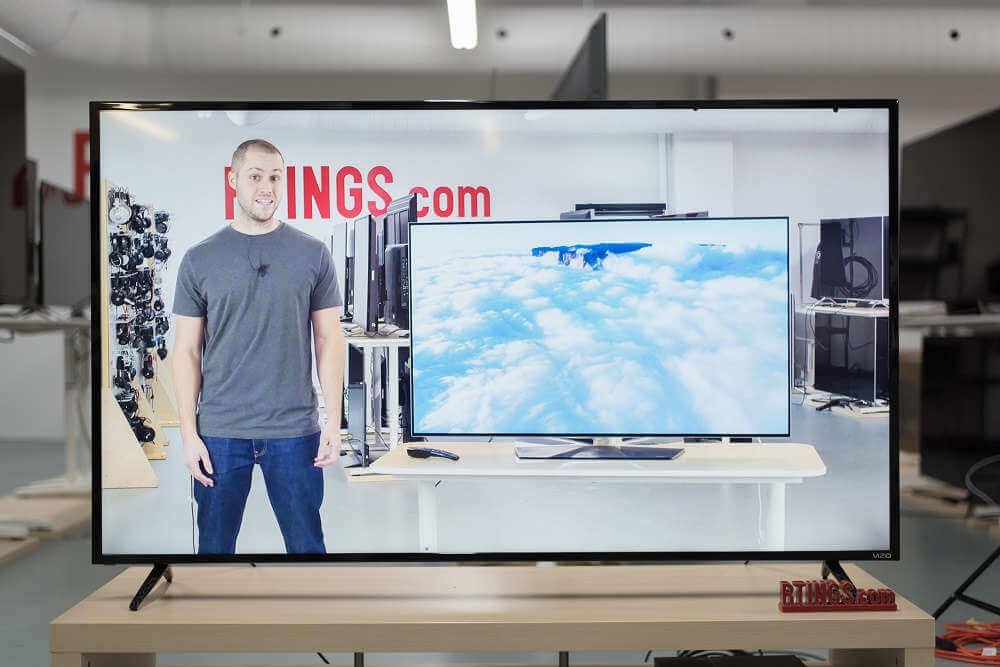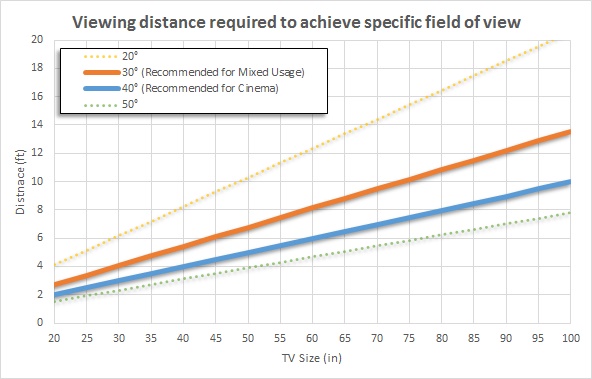How to Calculate TV Size and Viewing Distance

How close should you be to your TV for the best viewing?
Note: The post is adapted from Cedric Demers and Mehdi Azzabi’s article, “TV Size to Distance Calculator and Science” from May 26, 2017.
Bigger and closer is usually better when it comes to choosing the perfect television for your room. Not only is it the biggest factor affecting the price of a television, but it also has a huge impact on the perceived picture quality.
Since resolutions found today are almost exclusively 4k/Ultra HD, it takes a very big TV watched from very close to see imperfections related to the resolution. Because of this, viewers can appreciate their TVs from much closer for a more immersive experience. Think of it like a movie theater. The more a TV fills your view, the more captivating the content will be.
Do Not Sit Too Close
However, that doesn’t mean you should be sitting a foot away from your TV. Not everybody prefers having the largest screen possible. The human visual system has an angle of view of about 135 degrees horizontally. And while it makes some sense to get as large a TV you can get for viewing movies, content isn’t produced to be viewed while filling the entire field of vision. This becomes very apparent if you try to watch sports from up close. While fixating on a single part of the screen, it gets quite nauseating.
The Guidelines from the Society of Motion Picture & Television Engineers recommends sitting at a distance where the screen fills up about 30° of your field of vision as a minimum for a good experience. This generally provides good guidance. But viewers who use their TVs mostly for watching movies might benefit from sitting a bit closer to get a more theater-like experience. The SMPTE “reference” position for movie theaters and the THX recommendation is about 40 degrees. The minimum angle of vision works well for most usages though. Sitting at a distance where the screen fills 30° of your horizontal field of view should be comfortable for most people.

Here is 20 degrees field of vision.

Here is 30 degrees field of vision. Do you see the difference?
Increase Your Field of View for a Better Image
Higher field of view was first made possible with Full HD resolutions, but 4k enhances that ability even more. Sitting close to a 1080p TV will often make it seem like you are watching your TV through a screen door, even if it is playing a high quality 1080p HD movie. By increasing your distance from the TV, the density of the details will also increase, producing a better image. This is the angular resolution: the number of pixels per angle. The farther away, the higher the angular resolution will be. Since 4k TVs have such a large density of pixels, it is much more difficult for this issue to arise. You need to be quite close to a fairly large TV for it to be noticeably annoying.

Your Personal Visual Acuity Matters
The limit to which you can increase the angular resolution by stepping back depends on your visual acuity. At some point, your eyes are not good enough to distinguish all the details. Studies show that someone with 20/20 vision (or 6/6 in Europe) can distinguish something 1/60 of a degree apart. This means 60 pixels per degree or 32 degrees for a 1080p television. 4k UHD TVs double that to 64 degrees. Keep in mind that you can see a single pixel from further away (depending on its contrast with the rest of the picture).
![]()
For 4k, this distance is often too close for most people. This is because 1080p was designed around the field of view logic above. It is the cutting point at which both the optimal field of view and 60 pixels per degree meet. For lower resolutions, it meant sitting a bit further than preferable to not notice the pixels. 4k resolutions and higher give you a lot more freedom. Because of this, visual acuity isn’t really the best way to find the right distance anymore, and it should instead be used as a way to figure out the closest point you can sit to a TV without hitting its resolution limitation.
Tony’s Calculations – An Example
Applicable Dimensions – Let’s analyze a 35’ long presentation room to determine screen size to design. The room is 14’ wide with a 9’ ceiling.
This math says I will take 262” divided into 1.6, which equals a 228” diagonal image, that is 193” wide by 121” high in a 16:9 aspect ratio.
This is a 19’ wide X 10’ high screen! Obviously, this will not work. But what it does give is a rule to guide me. In this case the building is not constructed yet and so I can advise them to:
- change the room to accommodate a larger screen,
- change the orientation of the room seating, or
- just get the largest screen that will fit to make due with the original floor plan. Follow this link to the “TVCalculator.”
This is a good lesson on “visual acuity” because it gives the customer something to think about and gives me good questions to ask like, “What is the average age of the participants?” and “Will the presentations in this room be the focal point for long periods of time, or just for reference points made by the presenter?” There is most always a compromise unless the Av Designer can work with the architect during the building design, which is rare. In this case, I will recommend a recessed 10’ wide screen, using a 1920 X 1080 Projector, 16”9 format projection system. Why? I like to give 3’ off the floor for connectivity and clearance for the projected image not to hit the presenter in the eyes, so this gives us a screen that is 72” X 128”.
Need some further help to determine the best screen sizes to fit in your room?
Helping you choose the best screen for your viewing enjoyment!

Tony, the AV Guy

